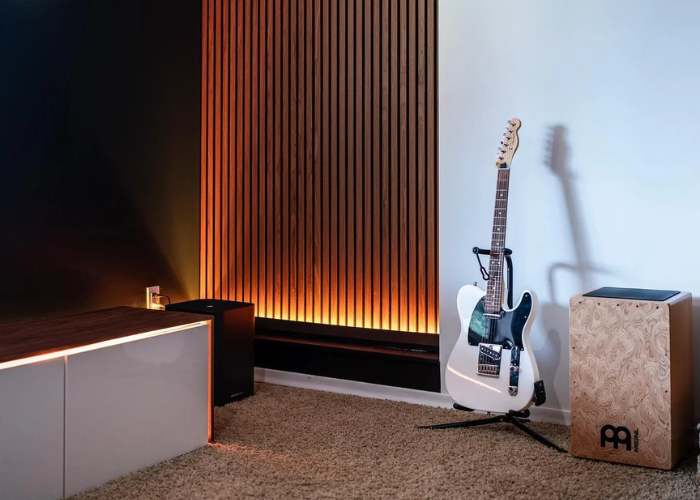Harnessing Sound Panels: Shaping Acoustic Environments
In a world where noise pollution is an ever-present challenge, the quest for creating harmonious acoustic spaces has gained significance. This pursuit has given rise to a powerful tool: sound panels. These unassuming yet ingenious panels have the ability to transform reverberant and noisy spaces into havens of acoustic comfort. In this article, we delve into the world of sound panels, exploring their types, applications, benefits, and considerations.
Defining Sound Panels and Their Purpose
Sound panels, also known as acoustic panels, are specialized treatments designed to manipulate the behavior of sound within a given space. They serve as acoustic enhancers, offering solutions for reducing echo, improving sound clarity, and controlling unwanted noise. Sound panels work by either absorbing or diffusing sound waves, helping create balanced and optimized acoustic environments.
Types of Sound Panels
- Absorption Panels: These panels are designed to absorb sound energy, converting it into heat. Commonly made from materials like acoustic foam, fiberglass, or rockwool, absorption panels effectively minimize sound reflections and reduce reverberation. They find applications in spaces where clear communication is essential, such as conference rooms, recording studios, and home theaters.
- Diffusion Panels: Unlike absorption, diffusion involves scattering sound waves in various directions, preventing them from being concentrated in specific spots. Diffusion panels, often composed of materials with geometric designs, disperse sound energy evenly throughout a room. They are valuable in spaces where balanced acoustics are crucial, such as music studios and auditoriums.
- Combination Panels: Recognizing the multifaceted nature of acoustic challenges, combination panels merge absorption and diffusion properties. These panels provide a comprehensive solution by addressing both excessive sound reflections and uneven sound distribution.
Applications of Sound Panels
The versatility of sound panels makes them invaluable across a range of environments:
Home Environments: Sound panels elevate the audio experience in home theaters by reducing echoes and enhancing sound quality. In living rooms and bedrooms, they create serene spaces by minimizing outside noise intrusion.
Professional Spaces: Recording studios benefit from sound panels that control sound reflections and standing waves, ensuring pristine recordings. Offices equipped with sound panels foster productive work environments by mitigating distractions and improving speech intelligibility.
Public Venues: In venues like theaters and auditoriums, sound panels optimize sound distribution, preventing audio dead zones and improving the listening experience for every audience member.
Selecting and Installing Sound Panels
Selecting the appropriate sound panels involves understanding the frequency range you need to address. Different panels cater to different frequency bands, allowing you to tailor your acoustic solution to your specific needs. Aesthetic integration and budget considerations are also important factors.
Installation plays a crucial role in sound panel effectiveness. Proper placement ensures that sound is absorbed or diffused optimally. Panels should be strategically positioned in areas where sound reflections are problematic, such as near walls, ceilings, or corners.
Benefits and Considerations
The benefits of integrating sound panels into your space are manifold:
Improved Sound Quality: Sound panels minimize unwanted reflections, enhancing the clarity of music, speech, and other audio elements.
Noise Reduction: Unwanted noise from outside sources is reduced, creating quieter and more peaceful environments.
Enhanced Speech Intelligibility: Clear communication is vital in various settings, and sound panels contribute to improved speech intelligibility.
However, it’s important to consider challenges such as addressing specific frequency issues and balancing absorption with diffusion to create an acoustically balanced space. Regular maintenance and cleaning are necessary to maintain the panels’ effectiveness.
Innovations and Future Trends
As technology advances, the realm of sound panels continues to evolve. The integration of smart technology could enable dynamic adjustments to acoustic settings based on real-time noise levels. Moreover, sustainable and eco-friendly options are gaining traction, aligning acoustic enhancement with environmentally conscious practices.
Conclusion
Sound panels are not merely decorative additions; they are vital tools in shaping the way we experience acoustic environments. Whether in homes, studios, or public spaces, these panels hold the power to create spaces that inspire, soothe, and optimize sound. By understanding their types, applications, and benefits, you can embark on a journey toward transforming your surroundings into acoustic sanctuaries.














Post Comment